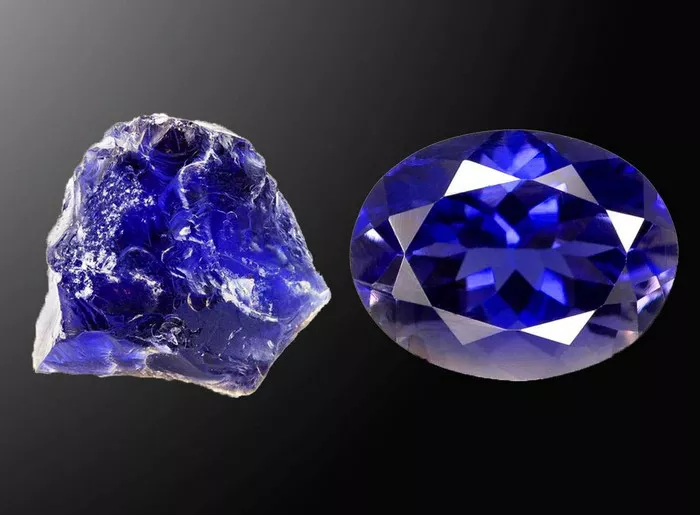Tanzanite is a rare and precious gemstone known for its mesmerizing blue-violet color and exceptional beauty. Discovered in the foothills of Mount Kilimanjaro in Tanzania, East Africa, tanzanite has captivated the hearts of collectors, jewelry enthusiasts, and gemstone connoisseurs around the world. But just how valuable is tanzanite? In this article, we will explore the factors that contribute to the value of tanzanite, including its rarity, color, clarity, size, and market demand.
Understanding Tanzanite
Tanzanite is a variety of the mineral zoisite, which was first discovered in Tanzania in the 1960s. What sets tanzanite apart from other gemstones is its unique blue-violet color, which ranges from pale lavender to deep indigo. The color of tanzanite is influenced by trace amounts of vanadium within the crystal structure, which gives the stone its distinctive hue.
Tanzanite is also renowned for its pleochroism, a phenomenon in which the stone displays different colors when viewed from different angles. This optical property adds to the allure of tanzanite and enhances its overall beauty and value.
Factors Influencing Tanzanite’s Value
Several factors contribute to the value of tanzanite:
Rarity: Tanzanite is one of the rarest gemstones in the world, with its only known source located in a small mining area in Tanzania. The limited availability of tanzanite makes it highly sought after by collectors and jewelry enthusiasts, driving up its value in the market.
Color: The color of tanzanite is one of the most important factors in determining its value. Stones with a rich, saturated blue-violet color are considered the most valuable and sought after, particularly those with a medium to medium-dark tone. Tanzanite with exceptional color saturation and clarity commands premium prices in the market.
Clarity: The clarity of tanzanite, or the presence of inclusions and internal flaws, can also impact its value. Stones with minimal to no visible inclusions are considered more valuable than those with visible flaws that detract from the beauty of the stone. Tanzanite with exceptional clarity and transparency is highly prized by collectors and jewelry buyers.
Size: The size of tanzanite can also influence its value, with larger stones typically commanding higher prices per carat than smaller stones. However, larger tanzanite stones are rarer and more difficult to find, making them highly sought after by collectors and investors.
Cut: The cut of tanzanite, including its shape, proportions, and faceting, can affect its brilliance, sparkle, and overall beauty. Well-cut tanzanite stones that maximize light reflection and dispersion are considered more valuable than poorly cut stones.
Market Demand: The demand for tanzanite in the market also plays a significant role in determining its value. Tanzanite’s popularity and market demand can fluctuate over time due to factors such as changing consumer preferences, economic conditions, and marketing efforts by retailers and manufacturers.
Tanzanite Grading
Tanzanite is graded based on the Four Cs: color, clarity, cut, and carat weight, similar to other gemstones such as diamonds. The Gemological Institute of America (GIA) has developed a grading system for tanzanite that evaluates these factors to determine the overall quality and value of the stone.
Color: Tanzanite is graded on a scale from “exceptional” to “pale” based on its color saturation, tone, and hue. Stones with a vivid, intense blue-violet color are considered the most valuable and are graded higher on the color scale.
Clarity: Tanzanite is graded on a scale from “flawless” to “included” based on the presence of inclusions and internal flaws. Stones with minimal to no visible inclusions are considered more valuable and are graded higher on the clarity scale.
Cut: Tanzanite is graded based on the quality of its cut, including its proportions, symmetry, and polish. Well-cut stones that maximize brilliance and sparkle are considered more valuable and are graded higher on the cut scale.
Carat Weight: Tanzanite is sold by weight, with prices typically quoted per carat. Larger tanzanite stones are rarer and more valuable than smaller stones, and prices increase exponentially with carat weight.
How Valuable Is Tanzanite?
The market value of tanzanite can vary widely depending on factors such as quality, size, color, clarity, and market demand. Tanzanite prices are quoted per carat and can range from a few hundred dollars per carat for lower-quality stones to several thousand dollars per carat for high-quality stones.
In recent years, tanzanite prices have been influenced by factors such as changes in consumer preferences, economic conditions, and supply and demand dynamics. Prices may fluctuate over time based on these factors, making tanzanite an attractive option for investors and collectors seeking to capitalize on market trends and opportunities.
Conclusion
Tanzanite is a rare and valuable gemstone prized for its stunning blue-violet color, exceptional beauty, and unique optical properties. The value of tanzanite is influenced by factors such as rarity, color, clarity, size, and market demand, with high-quality stones commanding premium prices in the market. Whether you’re a collector, investor, or jewelry enthusiast, tanzanite offers a unique and beautiful option for adding sparkle and sophistication to your collection or wardrobe. By understanding the factors that contribute to the value of tanzanite and knowing where to buy it, you can make informed purchasing decisions and enjoy the beauty and allure of this exquisite gemstone for years to come.


